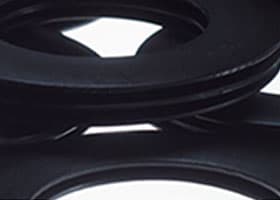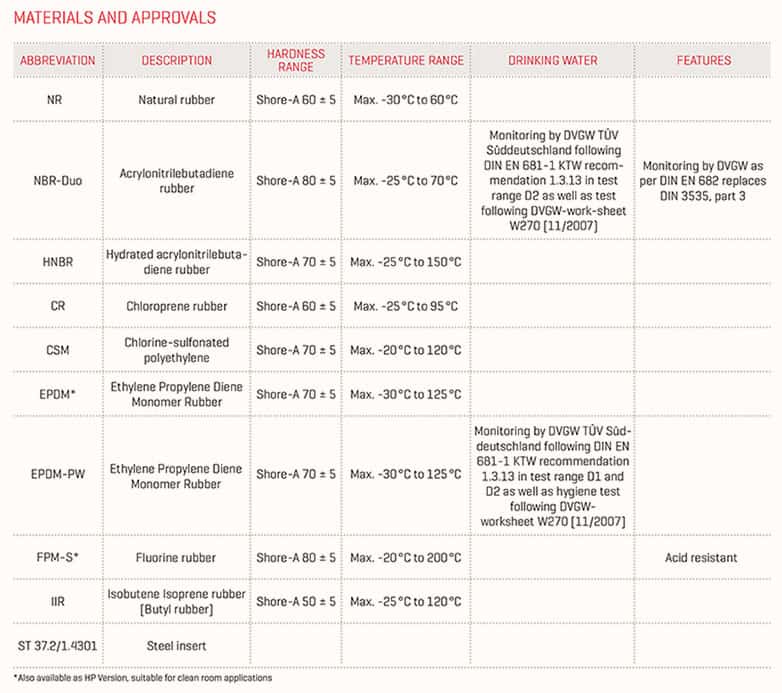Rubber Steel
Description
Rubber-steel gaskets [G-ST] are used in bolted connections in which only low bolting forces can be realised. The elastomer properties allow on the one hand a very good adjustability to the sealing surface, on the other hand low leakage rates are achieved due to the homogeneous structure. The use of a centrally fitted, corrosion protected and vulcanised steel insert increases the blow-out resistance and stability. Therefore, the gasket is easy to handle even at large nominal widths. Extreme adhesion between steel insert and the rubber jacketing is ensured due to the vul¬canisation. No moving, removal or even blow-out is possible even at the highest stress loads. The gaskets have a wide range of applications depending on the relevant elastomer and are suit¬able for water, water vapour, gas, air, acids, bases, hydrocarbons whilst application temperatures of up to 200 °C are possible. Rubber-steel gaskets [G-ST] are manufactured in various shapes according to the application area and the specified flange material [e.g. steel, FRP] and can be used in off- load and main load applications.
The combination of G-ST-base body and 0-Ring at the inner diameter combines the advantages of the individual elements. The sealing ring located at the force bypass clings perfectly to the sealing surface even at low surface pressures. Uneven areas and score marks, even slight adjustment tolerances are com¬pensated. An hitherto impossible operational safety is ensured in addition to material-efficient assembly at only low necessary tightening torques. Rubber-steel gaskets comply with TA Luft when adhering to the maximum installation surface pressure.
Properties
Applications
Product range
- Dimensions as per DIN EN 151LI-1, DIN 2690, DIN16962 part LI, DIN16963 part LI and ASME 16.21
- GS01 | Rubber-steel gasket
- GS101 | Rubber-steel gasket with 0-ring seal
- GS20 | Flexible design Rubber-steel gasket with 0-ring seal and visible stainless steel insert
- GS30 | Rubber-Steel gasket with 0-Ring seal and visible VA insert
Additionally: IN Profile Overview I GS series
Marking
Manufacturer, Design, Nominal width, Pressure stage, Manufacturing date, Certificates, Hardness of the elastomer



